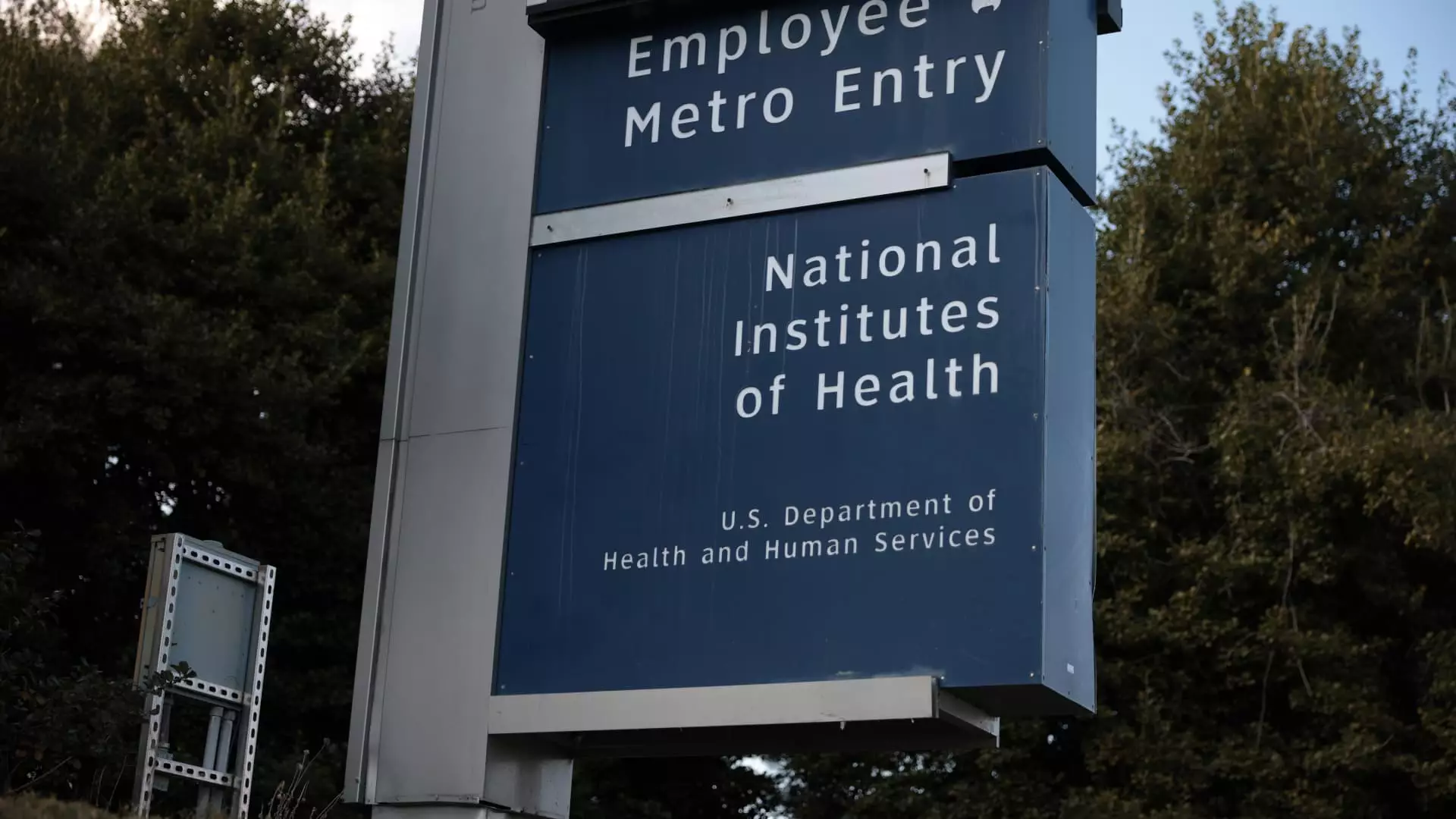The recent decision by the Trump administration to drastically reduce funding from the National Institutes of Health (NIH) marks a troubling chapter in the saga of American biomedical research. Specifically, the cap on “indirect costs” at 15% is an unprecedented move that risks crippling vital research initiatives across the nation. While the administration touts significant savings—purportedly over $4 billion annually—this shortsighted policy overlooks the crucial role that indirect costs play in maintaining the infrastructure necessary for groundbreaking research. Investors, particularly in the life sciences sectors, are feeling the heat as stocks plummet amidst this uncertainty. The looming question remains: what are the broader implications for American innovation and scientific leadership?
The Reality of Indirect Costs
At its core, the direct funding cuts impact the backbone of research institutions. Indirect costs encompass essential expenses like facility maintenance, utilities, and administrative support—elements that are often taken for granted. By capping these costs at 15%, the administration is effectively undermining the foundation on which robust research projects rely. Consider leading institutions like Harvard and Johns Hopkins, which manage indirect cost rates of over 60%. It is naïve to think that research can function effectively under such severely restricted budgetary conditions. The implications are stark: critical experiments could face delays or complete abandonment, stifling scientific progress at a crucial moment.
A Market Under Siege
The immediate ramifications of these funding cuts have already manifested in the stock market, where companies aligned with life science tools have seen significant losses. Firms like Illumina and Bruker have experienced declines of over 10%, following the NIH announcement. In a sector that is often perceived as stable and durable, this market volatility raises alarm bells. Investors are not just reacting to a possible drop in funding; they are grappling with a growing sentiment that the framework upon which the scientific community operates is being dismantled.
Analysts voice similar concerns, suggesting that the life science tools market may not just be fragile—it could be at a pivot point. With approximately 60% of U.S. academic research financed by federal sources, the very ecosystem that allows innovation to flourish is under existential threat. The ramifications may extend well beyond individual companies as prolonged instability could harm the overall market perception and confidence in the sector.
The Indirect Cost Calculation and Its Broad Impact
Critically, estimates suggest that should the 15% cap prevail, the cumulative loss in research funding could exceed $6.9 billion. Such figures, derived from a calculator developed at the University of Chicago, do not even fully account for the potential decline in research quality. It raises an unsettling possibility: American scientific prowess could take an irreversible hit. Researchers like Tara LeGates at the University of Maryland articulate a stark reality: without adequate infrastructural support, scientific endeavors become painfully impractical.
The implications of inadequate funding ripple through university communities, affecting not only research but also employment and local economies. LeGates’ warnings about an impending hiring freeze echo across other institutions, emphasizing a worrying trend where colleges fear pursuing ambitious research pathways amid financial uncertainty. Essentially, science and innovation could soon face an unprecedented gridlock, with universities shuttering innovative projects, laying off staff, and halting admissions.
A Broader Context: Global Implications
One cannot ignore the long-reaching effects of these funding decisions, particularly in the context of U.S. global leadership in scientific research. Analysts emphasize that if the indirect cuts materialize, the U.S. will fall behind other nations in fostering innovation and drug discovery. This poses a grave danger not only to our public health systems but also to the country’s reputation as a forefront leader in biomedical advancements.
The chilling reality is that America’s biomedical research infrastructure, once the gold standard that other countries have aspired to emulate, is now at stake. As these institutions grapple with dwindling resources, competitors abroad could seize the opportunity to fill the void left by U.S. innovations. Investments in research and development are crucial for any nation’s growth and maintaining its competitive edge; the Trump administration’s bankruptcy of this industry could serve as a long-term disservice to American society as a whole.
In an era where crisis can birth opportunity, this moment demands more than just passive observation. It challenges us to rethink our values in science and research funding. Let us be clear: the future of medical innovation is a public good that transcends political ideologies. As concerns mount and the stakes rise, it’s time for all stakeholders—lawmakers, investors, and the scientific community—to unite in advocating for the indispensable role of government funding in nurturing the eclectic landscape of life sciences in the United States. The responsibility extends beyond the political sphere; it requires an active commitment to safeguard the very essence of scientific inquiry and public health.

